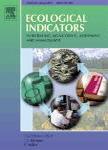版权所有:内蒙古大学图书馆 技术提供:维普资讯• 智图
内蒙古自治区呼和浩特市赛罕区大学西街235号 邮编: 010021

作者机构:Fujian Normal Univ Sch Culture Tourism & Publ Adm Fuzhou 350117 Peoples R China Fujian Normal Univ Postdoctoral Res Stn Ecol Fuzhou 350117 Peoples R China Fujian Normal Univ Sch Geog Sci Sch Carbon Neutral Future Technol Fuzhou 350117 Peoples R China Fujian Normal Univ Minist Sci & Technol & Fujian Prov State Key Lab Subtrop Mt Ecol Fuzhou 350117 Peoples R China Fujian Agr & Forestry Univ Coll Transportat & Civil Engn Fuzhou 350002 Peoples R China
出 版 物:《ECOLOGICAL INDICATORS》 (生态指数)
年 卷 期:2024年第166卷
核心收录:
学科分类:0710[理学-生物学] 0830[工学-环境科学与工程(可授工学、理学、农学学位)] 07[理学] 09[农学] 0713[理学-生态学]
基 金:Natural Science Foundation of Fujian Province [2023J01514, 2023J01477] Major Programs of the National Social Science Foundation of China [2021MZD024] National Natural Science Foundation of China [31971639, 41901221] Science and Technology Project of Fujian Forestry Bureau [SC-259]
主 题:Forest vegetation changes Forest landscape fragmentation Random forest Landscape pattern Machine learning algorithm
摘 要:A comprehensive quantification of the relationships between forest vegetation changes and forest landscape fragmentation is urgently required to provide valuable insights for informed forest management decisions. Previous efforts often focused on these two aspects separately, overlooking their intricate relationships, restricts the formulation of precise forest protection and recovery measures. To address this gap, taking Southeast China as a case, this study employed the Google Earth Engine (GEE) platform to calculate the annual Normalized Difference Vegetation Index (NDVI) from 2000 to 2020, a forest fragmentation comprehensive index (FFCI) was constructed to evaluate the static and dynamic forest landscape fragmentation over the study period, then the Theil-Sen and Mann-Kendall, the two-dimensional framework and the bivariate spatial autocorrelation, and a machine learning algorithm (random forest, RF) were employed to explore the forest vegetation change and forest landscape fragmentation, and their spatial coupling relationships and driving patterns, respectively. The results showed that the temporal trend of the forest vegetation can be categorized into three distinct phases, with the pattern of decreasing-rising-decreasing, 78.2% of the area improved in forest vegetation, while 11.0% degraded. Approximately 6.0% of forest landscape showed a decline in fragmentation, while 9.3% experienced increased fragmentation trends, including 3.8% of forest landscape with moderate to high static fragmentation and 5.5% of forest landscape with low to very low static fragmentation. Throughout the study period, approximately 66.8% of forest landscape remained stability with the improved forest vegetation;however, there were cases (more than 7% of forests) with improved forest vegetation, but experienced severe landscape fragmentation. The RF outcome revealed that the forest vegetation change dynamics were influenced by the multiple factors, including distance to forest edg